How to Remove the Unknown Locale (QAA-LATN) Language
Your system may show the unknown locale (QAA-LATN) in the language bar if a 3rd-party application (like Keyman) added the keyboard without user intervention. Moreover, the corrupt system registry keys (referring to the locale) may also cause the issue under discussion.
The user encounters the issue when he notices the unknown locale (QAA-LATN) keyboard in the language bar but the locale is not visible in the language settings of the system. Along with the client desktop version of Windows, the issue is even reported on the Server version of Windows (mainly on Hyper-V virtual machine).

Before moving on with the solutions to remove the language locale (i.e. QAA-LATN), check if the Windows of your system is up-to-date. Moreover, if you are using a 3rd-party keyboard manager (like Keyman), then make sure it is updated to the latest build.
Solution 1: Remove the 3rd Party Conflicting Applications
Many Windows applications can be used to customize your keyboard functionality (for example the Keyman application) and install new keyboards. But these applications, sometimes hinder the operation of basic input modules of the system and thus cause the error at hand. In this scenario, removing these applications and keyboards added through these applications may solve the problem. We will discuss (for illustration) the process for the Keyman application, you may have to find the application causing the issue.
- Before moving with the uninstallation, check if all the keyboards added by Keyman are removed. Moreover, make sure any process related to the Keyman application is not operating in the Task Manager of your system.
- Hit the Windows key and choose Settings.
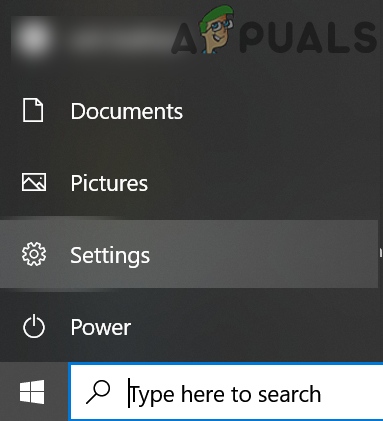
Open the Windows Settings - Then open Apps and expand Keyman.

Open Apps in the Windows Settings - Now click on the Uninstall button and then confirm to uninstall the Keyman application.
- Then follow the prompts on your screen to uninstall Keyman and reboot your PC.
- Upon reboot, check if the QAA-LATN locale issue is resolved.
Solution 2: Add and Remove the Language
The issue at hand can be a result of an OS bug. The bug creating the keyboard issue can be overcome by adding the language (it will overwrite the registry values of the bug) and then removing the language may solve the problem.
- Hit the Windows key and in the Windows menu, click on Settings (the Gear icon).
- Now open Time and Language and in the left pane of the window, select Language.

Open Time & Language in the Windows Settings - Then in the right pane of the window, click on Add a Language, and then, in the Choose a Language to Install window, search for QAA-LATN.

Select Add a Language in the Language Settings - Now, select the QAA-LATN language and click on Next.
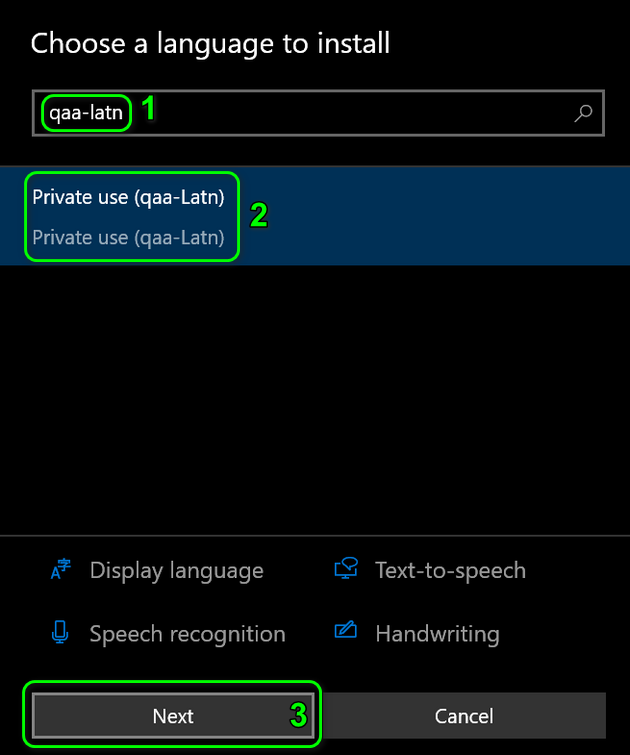
Add QAA-LATN to Your System - Then follow the instruction on the screen to add the language and reboot your machine.
- Upon reboot, open the Language settings (steps 1 and 2).
- Now expand the QAA-LATN language (under Preferred Languages) and click on the Options button.
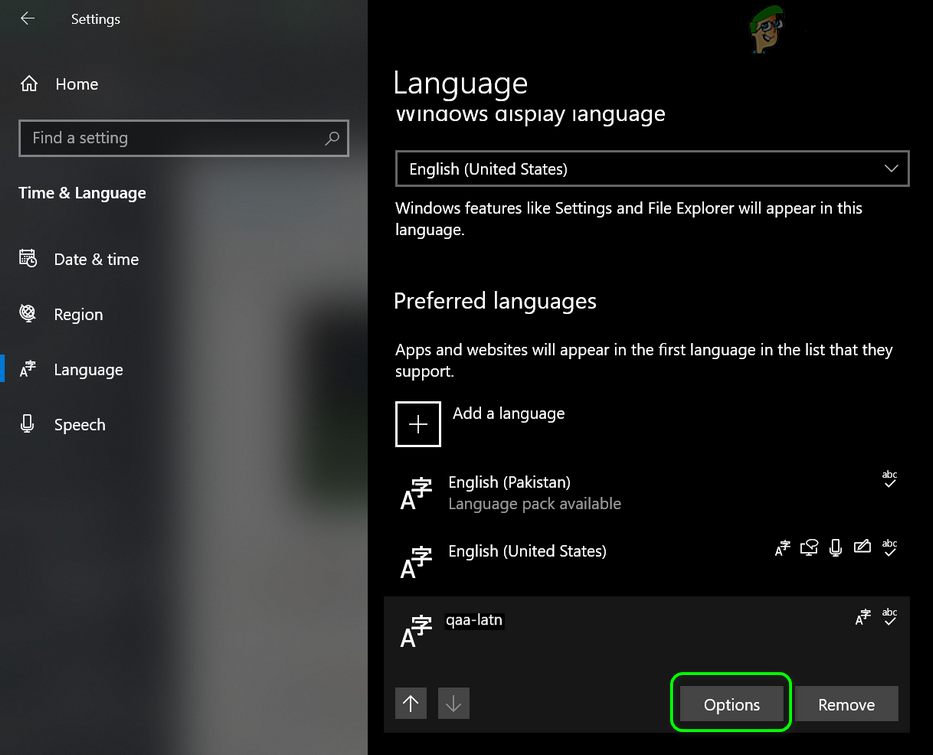
Open Options of QAA-LATN Language in the Language Settings - Then, under keyboards, expand the QAA-LATN keyboard. If the keyboard is not visible or the remove option is greyed-out, then move to step 10.
- Now click on the Remove button and then confirm to remove the QAA-LATN keyboard.
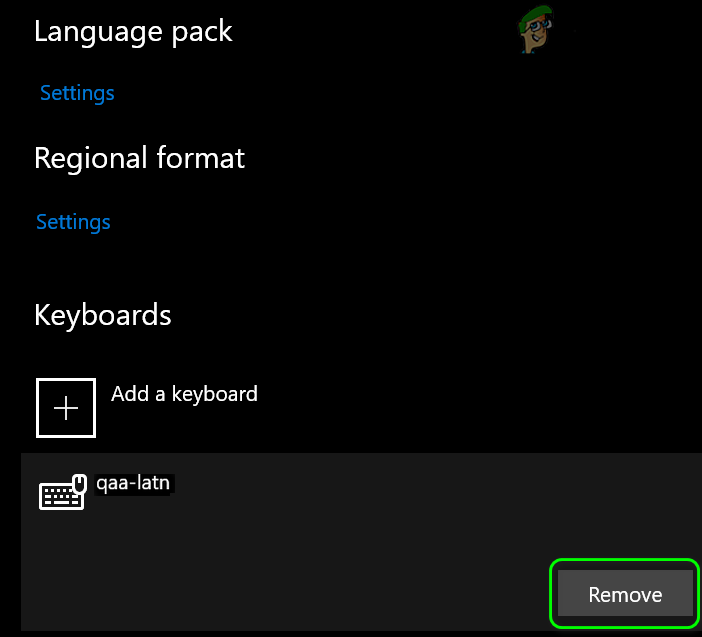
Remove the QAA-LATN Keyboard - Then click on the Add a Keyboard option (under Keyboards) and select German Keyboard.
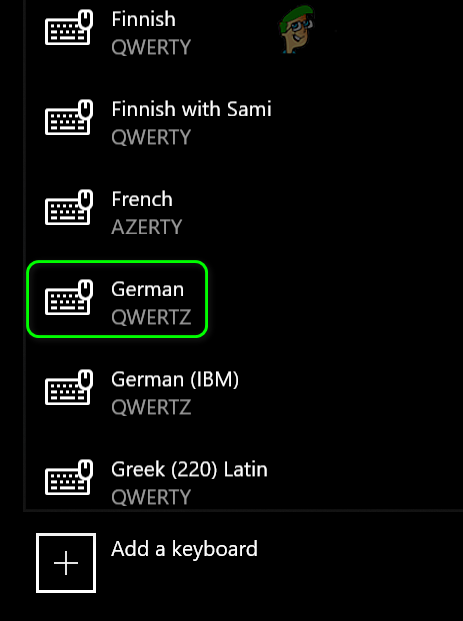
Add the German Keyboard to Your System - Now reboot your PC and upon reboot, open the Language Settings window (steps 1 and 2).
- Now expand the QAA-LATN language and click on the Remove button.
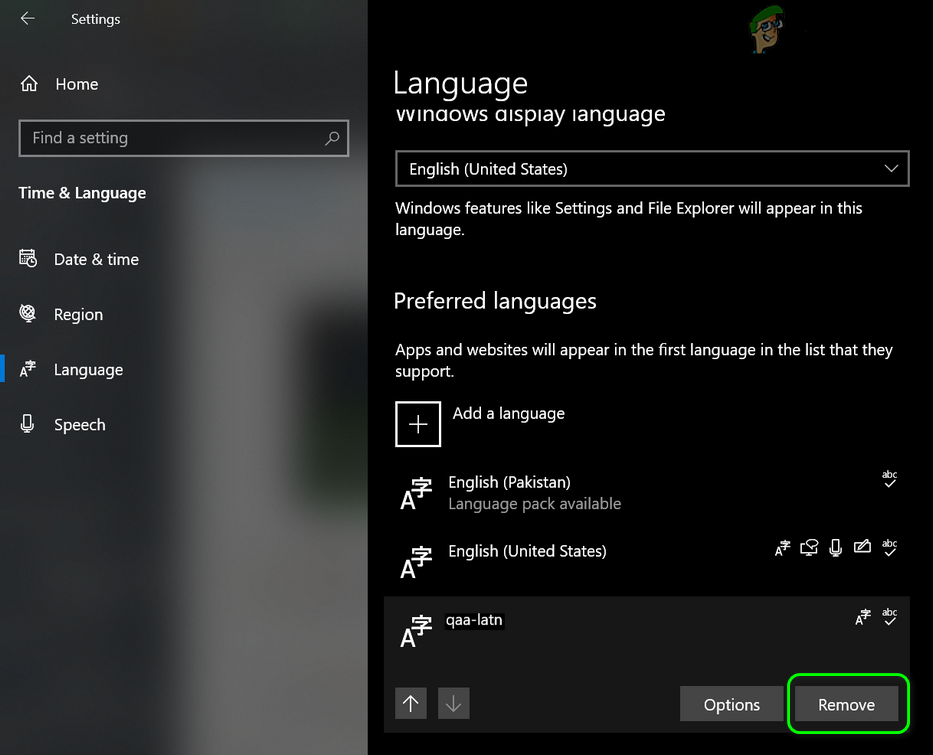
Remove the QAA-LATN Language from Your System - Then confirm to remove the QAA-LATN language and reboot your PC.
- Upon reboot, check if the QAA-LATN issue is resolved.
- If not, then check if removing all other languages except the default language solves the issue.
Solution 3: Use the PowerShell Commands
If the above-mentioned solutions did not solve the issue for you, then you may try the PowerShell commands to get rid of the problem.
- Press Windows + X keys to launch Windows Quick Start Menu and select Windows PowerShell (Admin).

Open Windows PowerShell (Admin) - Then execute the following:
$LanguageList = Get-WinUserLanguageList $LanguageList.Add("qaa-latn") Set-WinUserLanguageList $LanguageList -Force - Now, check if the QAA-LATN language is showing in the Language settings of your PC, if so, then remove it (as discussed in solution 2) and check if the issue is resolved.
- If not, then execute the following (any added languages will be removed and the language setting will revert to default):
Set-WinUserLanguageList en-US -Force
- Now reboot your PC and upon reboot check if the QAA-LATN locale issue is resolved.
- If not, then execute the following:
$LanguageList = Get-WinUserLanguageList $LanguageList.Add("qaa-latn") Set-WinUserLanguageList $LanguageList -Force $LanguageList = Get-WinUserLanguageList $Language = $LanguageList | where LanguageTag -eq "qaa-Latn" $LanguageList.Remove($Language) Set-WinUserLanguageList $LanguageList -Force - Then check if the locale issue is resolved.
Solution 4: Delete the Registry Keys
You may encounter the error under discussion if the keys pointing to the QAA-LATN locale are “stuck in the memory” of the system’s registry. In this context, removing the problematic registry keys may solve the problem.
Warning: Be very careful as editing the system’s registry requires a certain level of expertise and if done wrong, you may cause everlasting damage to your system/data.
- Backup the Registry of your system (just in case…).
- Launch the Windows menu by hitting the Windows logo key and in the search bar, type Registry Editor. Then, right-click on the result of the Registry Editor and choose Run as Administrator.
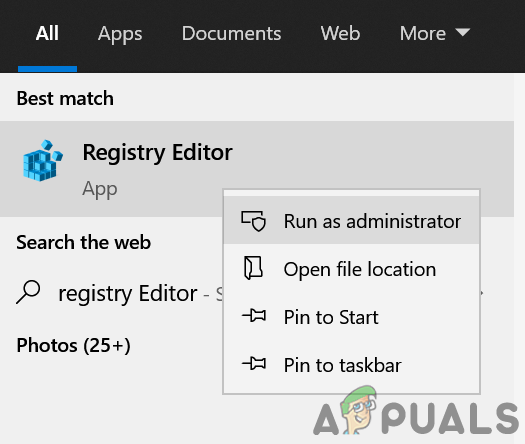
Open Registry Editor as Administrator - Then, open the Edit menu and select Find.
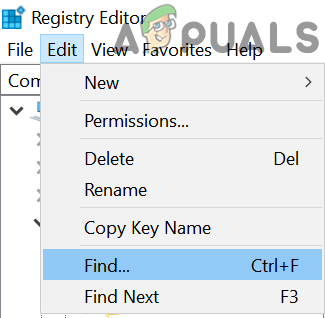
Open Find in the Registry Editor - Now, in the find box, search for “keyboard” and delete the keyboards keys (you can use the F3 Function key to navigate to the next search result in the Registry Editor) that are not required (be very careful with what you are deleting).
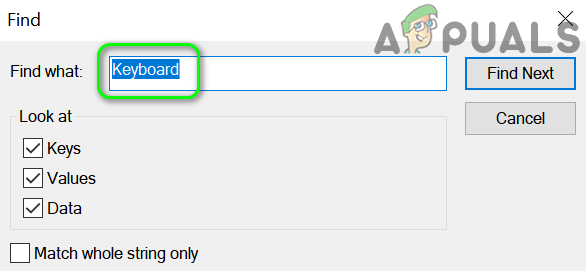
Search for Keyboard in the Registry Editor - Then exit the Registry Editor of your system and reboot your PC.
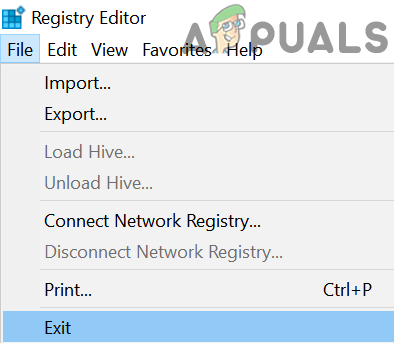
Exit the Registry Editor - Upon reboot, hopefully, the locale issue is resolved.





